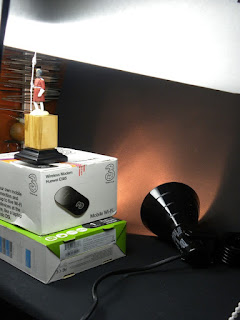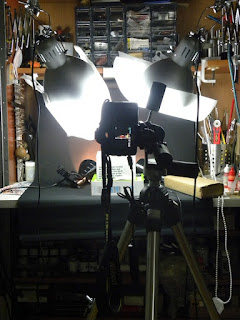I ve found a really nice and well-written tutorial about how to get good pictures of your painted miniatures.
As I don`t have written this on my own I want to please you to take notice that this tutorial was written by Giovanni Azzara. You can find his blog here:
http://giovannimodelling.blogspot.com/
And here`s the tutorial, simply used copy and paste:
Dear all,
This is an article I was thinking of doing for quite sometime now.
Is a simple explanation on how to make great pictures of our models, without any special or (too) expensive asset.
Here is what we need:
A digital camera that must have the manual White Balance setting and maybe a macro lens/capability.
A tripod
2 table lamps, (you can use the one you work on your models)
2 smaller lamp
oven paper
background paper (A3/A2 coloured bristol paper are perfect)
a white sheet of paper
a room with all your lights off except the one above
Place the camera on the tripod.
Let's start with the camera settings: try to use the higher stop from f.18 to higher, let the camera decide the exposure time, with your tripod it won't be a problem.
Now, check the user manual of your camera and check how to measure and set up manually the White Balance.
The concept is that different bulbs or environment have different light temperatures, where human eye can understand and judge the white under different lights sources for the digital camera is not the same. White balance (WB) is the process of removing unrealistic colour casts, so that objects which appear white in person are rendered white in your photo. I've found a better explanation here: http://www.cambridgeincolour.com/tutorials/white-balance.htm
Usually, you need to go in your settings menu, look for White Balance>manual settings; switch on the lights you will use to take the pictures, place the white piece of paper under the lights and take a picture of it while in the WB menu, the camera will elaborate and your white balance should be now set. Anyway, check your camera user manual.
Trust me, this step will improve your pictures dramatically!
Ok, let’s set up the stage:
Place the A3/A2 bristol paper of the colour you like (avoid to use the same colour of the subject i.e. if the uniform is red, avoid a red background..) try to make a soft bend when rest on the table, something like the drawing below (Sorry I’m not Leonardo…)
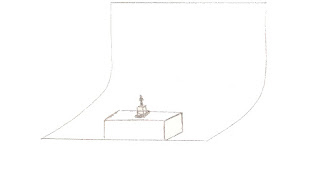
Place a box/stand where you are going to place your figure at least 30cm from the background. This box stand should be as high as the 2 small lamps you are going to use, better if taller.
Now the set up of the lights:
As a general notes, I use very cheap ikea lamps, I haven’t spent more that 40 euros for all the 4 lamps. I use, for the main lamps, 30W energy efficient bulbs with 6400k light temperature (they are equivalent of 100/150W incandescent lamp), normal 25w lights for the small lamps.
Place the 2 table lamps, 45° in front of the figure and at 45° angles from the top of the figure, again the following drawing should explain better.
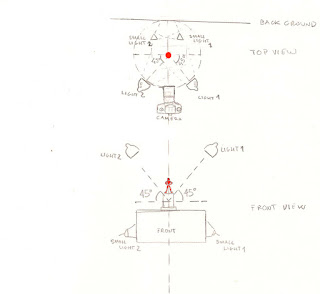
Also place one or two piece of the oven paper in front of the lamps, to soften the light.
Now place the 2 small lights on the back of the stand resting on the table and pointing towards the background, they should light the bottom part of the background and give a gradient tone to it.
The gradient tone is a nice touch, look at the following picture, bare in mind that the backgroud is a piece of black cloth, see how nice id the gradient effect with the small lamps on.
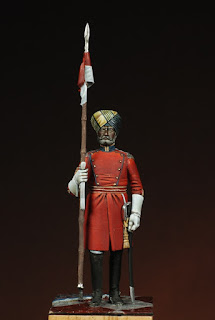
That’s it, place the camera in front of the subject, choose a stop above f.18 and shoot; because the exposure time will be long, better if you use a remote control to shoot, if you don’t have one, no worries, just use the self timer.
You can adjust the exposure compensation value, if you notice that the picture is too dark or to light, usually I adjust mine to -1.3 but you need to check with your camera/lens/lights.
Take as many pictures as you can, every time take notes of stop, exposure etc.etc and check which one is better, if yur camera allow it, save these settings so you can reuse it in the future.
I hope this article make sense and will help you with your photography.
This entry was posted
on Wednesday, July 13
at Wednesday, July 13, 2011
and is filed under
Tutorials
. You can follow any responses to this entry through the
comments feed
.
Never miss an update!
Blog - Newsticker
-
-
-
Do Not Miss 2025 Week 243 months ago
-
-
-
-
-
-
-
-
Time to say....13 years ago
-

